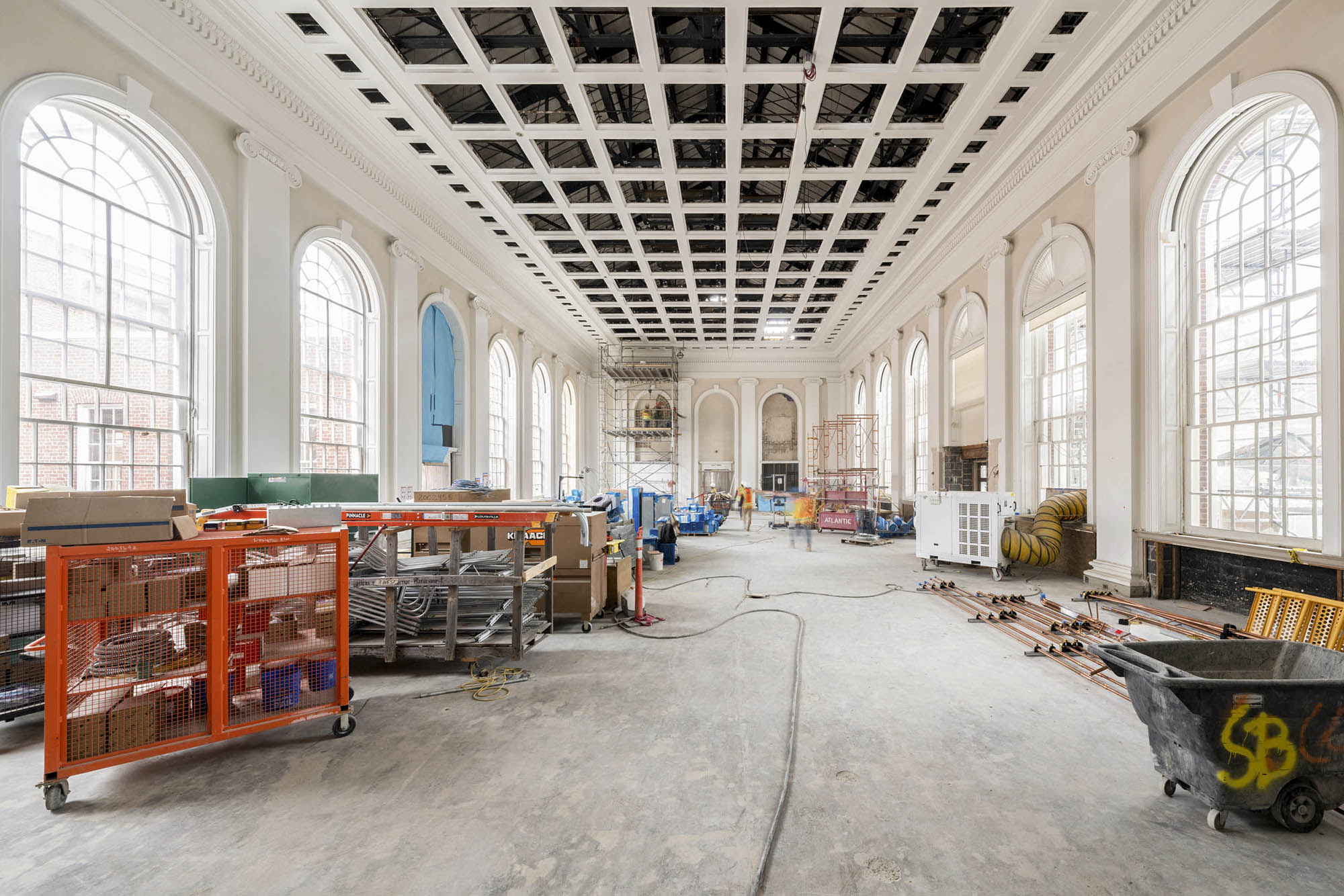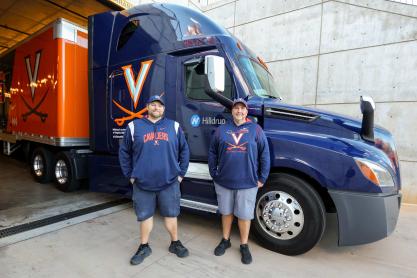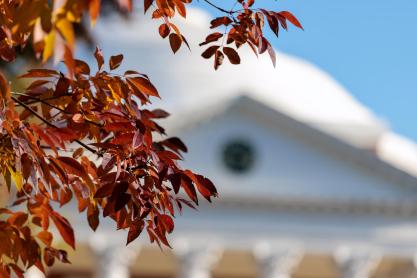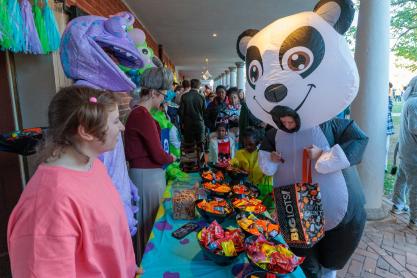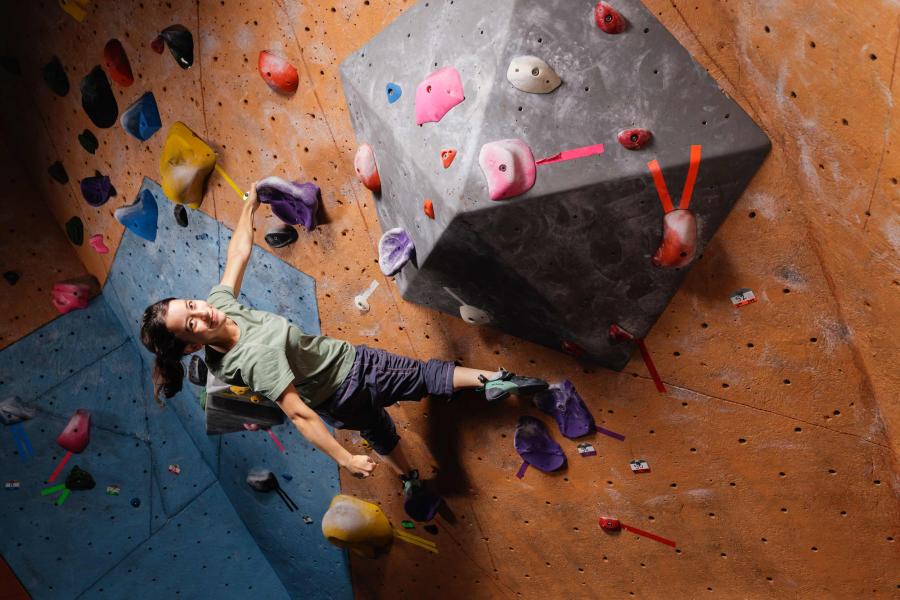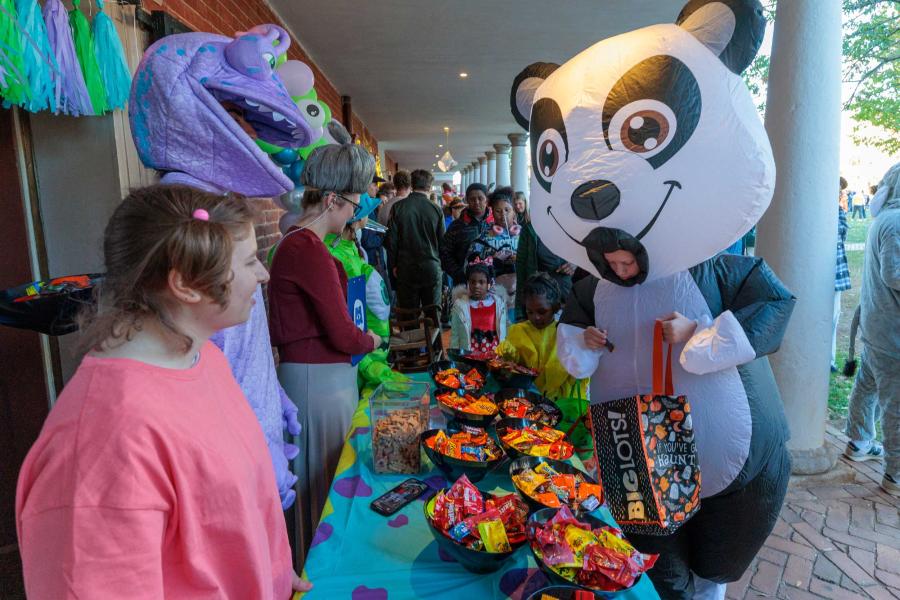“At the end of this experience, I hope students become more familiar with the construction terminology, construction site management tasks and operations, and roles in the field and office,” Duran said. “This is a unique opportunity to build knowledge and skills that construction companies look for in recent graduates.”
UVA Today caught up with Hark and Garnjost to hear more about their experiences.
Q. The Alderman renovation and expansion is something so many people around Grounds are excited about. What’s it like to be involved on something so historic? I imagine you’ve had to become a bit of a historian yourself during this experience.
JH: Every time I walk through the building, it is humbling to think of the experiences that have made up the library’s history and the educational opportunities that will come in the future. Skanska is passionate about preserving the historic nature of the building, and has taught us a lot about the act of historic preservation.
Personally, I have really enjoyed learning about the material selection process for the new addition as it relates to the historic assembly of the 1930s building. There is so much that goes into the preservation of historic places, and I’m confident the library will remain a celebrated space on Grounds for generations to come.
AG: Honestly, this is an extremely worthwhile experience. I am so excited about visiting the library when it is complete. I enjoy seeing the progress made in the short time I have been part of this project. I specifically love seeing the remodeling of some of the historic rooms, such as the McGregor and the Garnett rooms. I didn’t get a chance to see campus too much – only a month before COVID and this semester – but this project has made me feel part of something truly historic in UVA’s history.
Q. Can you tell us about your experiences shadowing the project team? What have been the most valuable things you think you’ve learned that perhaps being solely in a classroom wouldn’t have taught you?
AG: The first major lesson that wouldn’t normally be taught in classes is the background of the team members. There are a lot of people on the team and seeing how they got into their positions and their experiences offered a lot of insight. I really enjoyed hearing about previous projects they have worked on. Skanska is a large company, and they have worked in many places in the country. This can normally be done in classrooms via speakers, but not for as long as we got to get to know the team.
Another thing I enjoyed was sitting into their coordination meetings. These meetings are where the team meets with the subcontractors working on the site and handle any problems that are occurring and schedules tasks each week. The meetings let us see how the project is moving as a whole.
The tours fulfill the same purpose, but have the additional benefit to see what’s actually being done each week and let us see the actual progress. These tours are normally led by a member of the team who is working a specific task/area. It’s a great time to ask questions we have throughout the week and see the order of activities being done. Since the project is currently moving top to bottom, we get to see the project at different stages across different levels.
JH: I am gaining useful management skills, in the forms of material quantity ordering and pricing, product submittal approvals and other administrative tasks. My time in the office with the team has helped me understand the true collaboration required for construction projects. Each week we sit in contractor-scheduling meetings, which has allowed me to engage with the other leaders working on the site, including foremen and superintendents.
Q. What has been the biggest surprise?
AG: Honestly, my biggest surprise is the speed at which the project, specifically the demolished addition, is moving. Over the course of the shadowing program, they have finished almost the entire base floor, concrete-wise. I have no prior reference for the speed of building from the ground up. [We saw] mostly dirt when we started and now you can’t see any dirt on the addition.
JH: I am continuously surprised by the level of skill, patience and communication that is required in this and all construction projects. The complexity of the project is truly astounding, but Skanska, UVA, the design team, and the subcontractors work in a harmony that is incredible to watch.
Q. How specifically do you think this experience helps you in reaching future career objectives?
AG: I still don’t know exactly what part of civil engineering I want to work in, but whatever it is, this class will be extremely helpful. If I work in the construction management side, I will have gained valuable lessons in operations on an actual project. If I work on the design side of projects, I will have gained understanding of operations in the field. Better understanding of the specifics on the construction side will allow me to work more cooperatively with the construction team.
JH: I think the design world tends to be a bit insular and separated from the actual construction process. Unlike other design students, I am excited to practice outside of cities with a focus on design-build projects that will allow me to collaborate with contractors on a daily basis. Design and construction have the potential to work harmoniously together, and this course has given me the first steps to having meaningful and successful collaborations with the builders of my future designs.
Personally, I think everyone should know the care and complexity with which all our spaces are constructed, and I am grateful to have a better understanding of how the floor was built under my feet.
Q. Is there anything else about your experience that you’d like to add?
AG: I want to say that the UVA civil engineering program expanding the construction track is incredibly helpful for future students. I’m currently a [Master of Engineering] student, and when deciding a track, there was only water and environment, structural, and transportation and infrastructure systems (which I chose). With the addition of construction and management, I think UVA has improved to have more parts of the civil engineering curriculum covered, which will be helpful for future students.
JH: Understanding that Professor Duran designed this class with the construction track of civil engineering, I am incredibly grateful that she has opened up the course to the School of Architecture. I think that these types of interdisciplinary interactions are incredibly vital to the education process, and I’m hoping that this course and others like it can pave the way to a fantastic relationship between different students and educators throughout all of UVA.
In the next academic year, Duran is hoping to expand the collaboration with Skanska to other companies that have on-Grounds projects, so that more students can benefit from the learning experience.
For all the latest happenings, be sure to follow the program’s new Instagram page.
